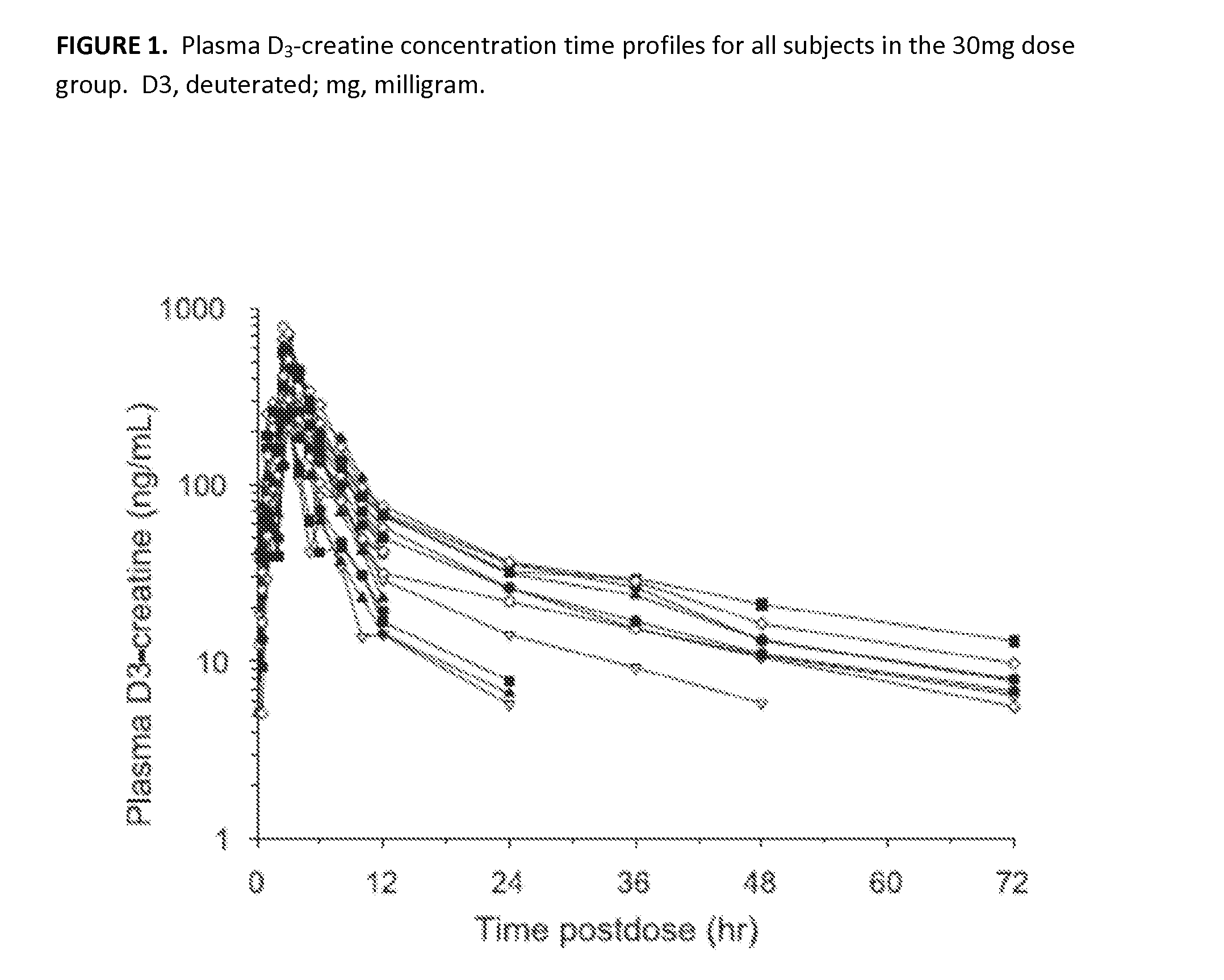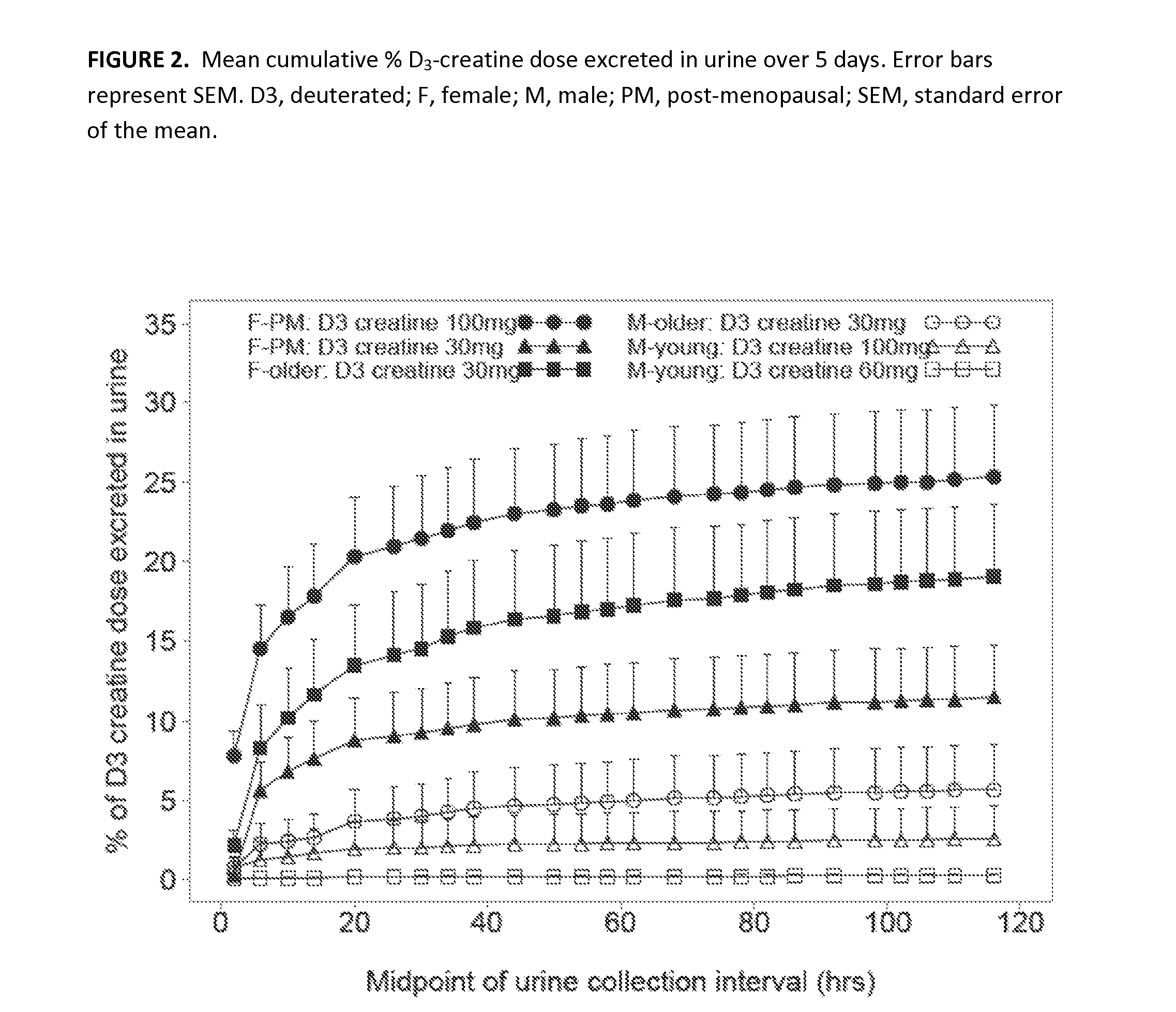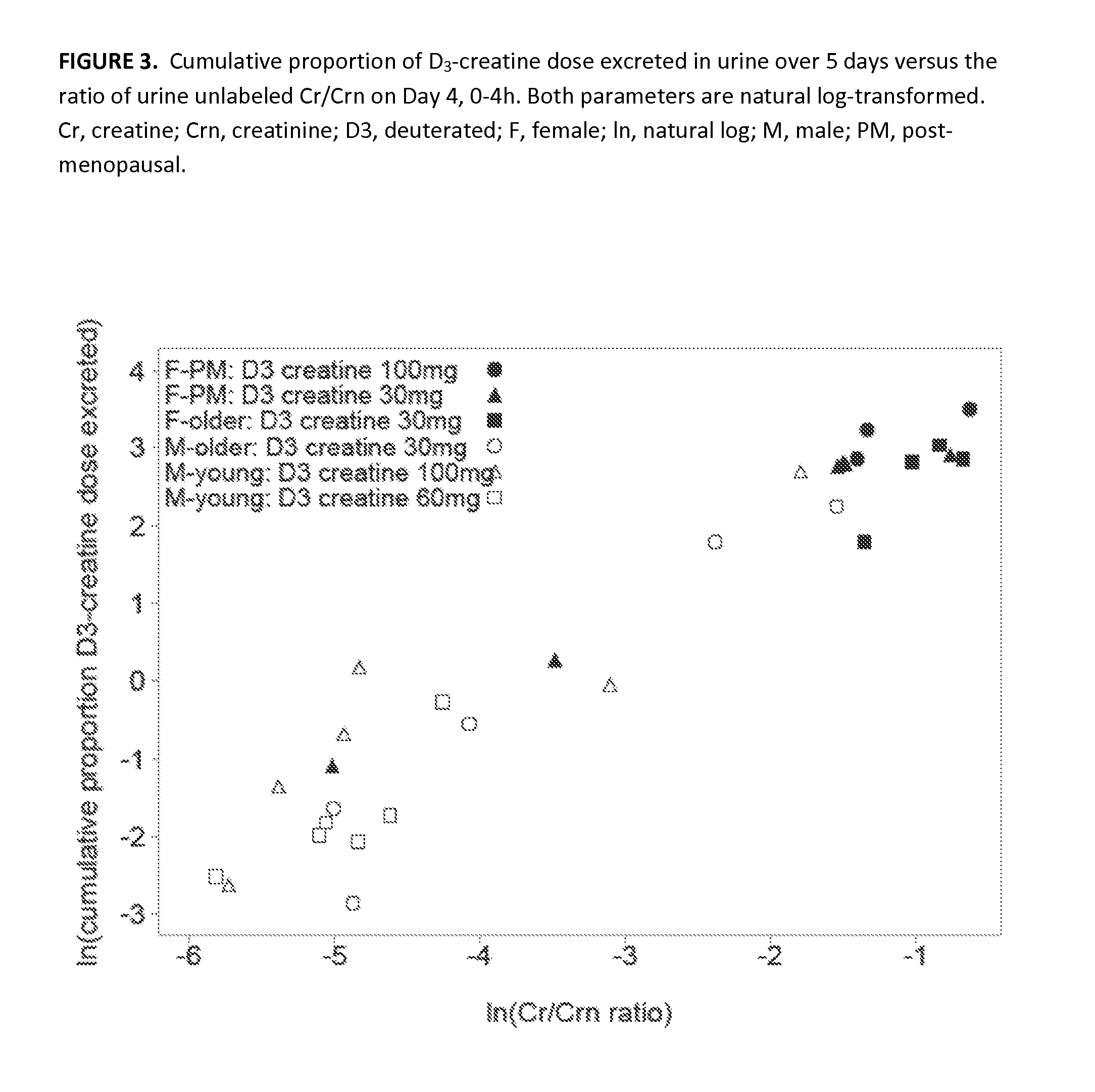Methods for determining total body skeletal muscle mass
- Summary
- Abstract
- Description
- Claims
- Application Information
AI Technical Summary
Benefits of technology
Problems solved by technology
Method used
Image
Examples
Embodiment Construction
[0027]The present invention is based on the finding that enrichment of isotope-labeled creatinine in a urine sample following oral administration of a single defined dose of isotope-labeled creatine can be used to calculate total-body creatine pool size and skeletal muscle mass in a subject. Accordingly, the invention provides a non-invasive, accurate method of determining total body skeletal muscle. The methods of the invention find use, inter alia, in diagnosing and monitoring medical conditions associated with changes in total body skeletal muscle mass, and in screening potential therapeutic agents to determine their effects on muscle mass.
[0028]According to the method, isotope-labeled creatine is orally administered to a subject. Although the present is not limited by mechanism, it is believed that the isotope-labeled creatine is rapidly absorbed, distributed, and actively transported into skeletal muscle, where it is diluted in the skeletal muscle pool of creatine. Skeletal mus...
PUM
 Login to View More
Login to View More Abstract
Description
Claims
Application Information
 Login to View More
Login to View More - R&D
- Intellectual Property
- Life Sciences
- Materials
- Tech Scout
- Unparalleled Data Quality
- Higher Quality Content
- 60% Fewer Hallucinations
Browse by: Latest US Patents, China's latest patents, Technical Efficacy Thesaurus, Application Domain, Technology Topic, Popular Technical Reports.
© 2025 PatSnap. All rights reserved.Legal|Privacy policy|Modern Slavery Act Transparency Statement|Sitemap|About US| Contact US: help@patsnap.com



